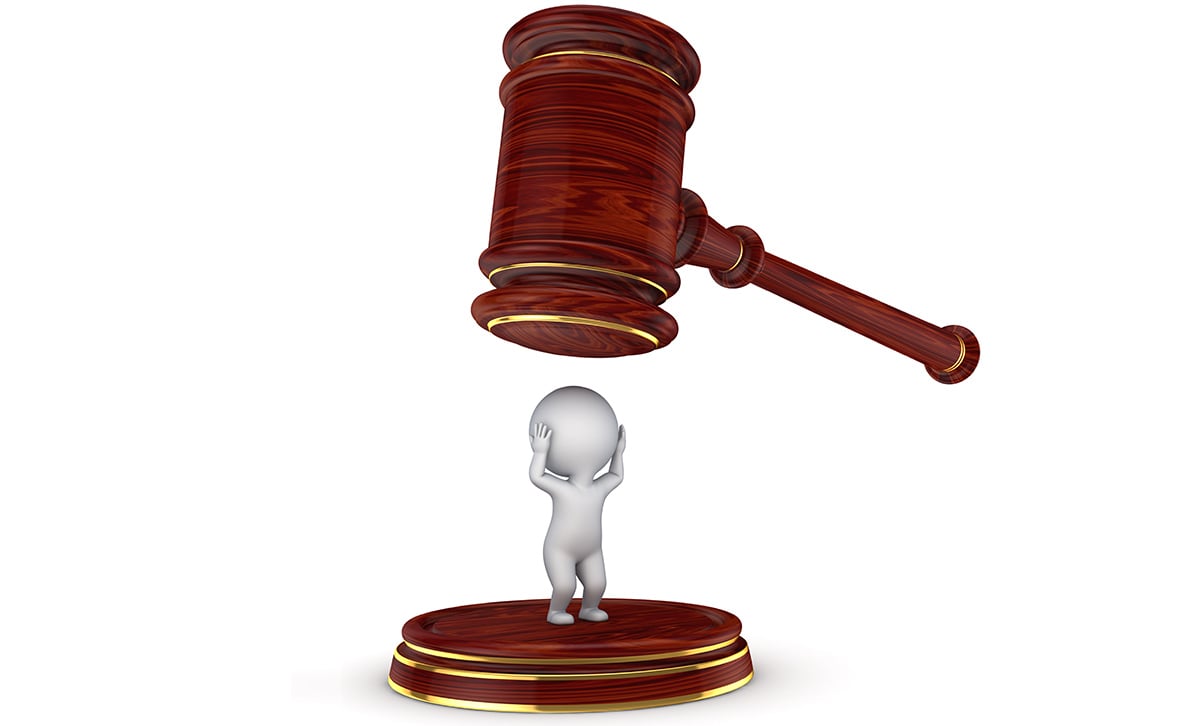There's a revealing scene in the film version of Michael Lewis's The Big Short. It's 2007; the subprime mortgage crisis has yet to unfold. Two hedge fund managers visit a Standard & Poor's executive in her office on Water Street in Manhattan. One asks the exec to name a time in the past year when the company didn't give a bank the AAA rating it was seeking. She demurs. “If we don't work with them,” she says, “they will go to our competitors. It's not our fault. It's simply the way the world works.”
That was the way the world worked then—and, 10 years later, it's not entirely clear how much has changed.
Before the crisis, Standard & Poor's Global Ratings (now S&P), Moody's Investors Service and Fitch Ratings—the Big Three—showered investment banks with a bounty of AAA blessings, giving them the regulatory license to gobble up mortgage-backed securities. When the subprime market crashed, these complex debt instruments infected the balance sheets of banks worldwide, wiping out an estimated $11 trillion of household wealth in the U.S. alone.
Of all the securities classed as investment-grade by Moody's (Baa3 or higher) in 2007, for example, 89% were subsequently downgraded to junk. “This crisis could not have happened without the rating agencies,” the Financial Crisis Inquiry Commission concluded in 2011.
You might have expected the credit rating companies, like the banks, to have taken a massive regulatory hit, savaging their business models and earnings prospects. They didn't. In fact, they managed what amounts to the great escape of the post-crisis era. Ten years later, the Big Three's grip on business is stronger than ever. “I, like everyone else, thought S&P, Moody's, and Fitch would fail to exist as companies, as they would blow up in a storm of litigation and no one in the markets would use them again,” says Daniel Davies, research adviser at London-based Frontline Analysts, a risk and credit analytics firm. “Yet, they seem stronger than ever before.”
Towering over a cluster of much smaller rivals, the Big Three control about 96% of the global market. Their way of doing business—the issuer-pays model that's been around since the early 1970s—endures. Now that model could face its first serious test since the crisis as the Federal Reserve hikes interest rates from the low levels that have spurred record corporate-bond issuance.
The post-crisis swing in the regulatory pendulum changed Wall Street forever, but it's not clear how much life changed for the umpires of credit, despite a few regulatory tweaks such as new Securities and Exchange Commission rules to reduce conflicts of interest. Investors, analysts, and lawmakers say rating companies continue to weaken standards to win business, with regulators again asleep at the wheel.
“The bottom line is that the same risks that devastated our economy will continue unless we take action,” said Senator Al Franken, a longtime campaigner for credit rating reform. (In 2010 the Minnesota Democrat won passage of a legislative amendment that would have changed the way the companies do business, but it was stripped from the final bill.) Franken says stronger measures are needed to protect Main Street from “Wall Street's recklessness.”
In their defense, the Big Three say they welcome competition and embrace good governance. Spokespersons for Moody's and Fitch cited reports that detail their compliance with post-crisis regulations, including SEC-imposed firewalls between credit analysis and sales and marketing designed to reduce potential conflicts of interest. “Our primary focus,” says S&P President John Berisford, “is to be deeply aware of the potential conflicts within the business.”
Judging from the evidence of recent years, new regulations clearly didn't banish the demons of the crisis forever. In January 2015, S&P paid $58 million to settle claims it had loosened its standards to win business in commercial-mortgage bonds three years earlier; the SEC ordered S&P to suspend significant portions of that market for one year.
Today, as that slap-down suggests, a new cloud looms over the industry. As delinquencies in the $505 billion U.S. commercial-mortgage bond market rose this year, Bloomberg News reported that smaller rating companies such as DBRS Inc. and Kroll Bond Rating Agency Inc. were abruptly downgrading bonds tied to properties like shopping malls and office towers just a few years after lavishing top grades on them. While the rating companies in question contend the downgrades reflect a shifting economic landscape, some investors charge that the companies, in their zeal for market share, were too lenient in the first place.
And there's the rub. The issuer-pays model remains an incentive for raters to go easy on clients, says Marcus Stanley, policy director at Americans for Financial Reform in Washington, an activist group. “As long as ratings agencies are both central to securities markets and face incentives to inflate ratings and mislead investors, they pose a risk to the financial system,” he says.
An SEC report last December read like something right out of the crisis. Without naming specific companies, it exposed basic errors and conflicts of interest in the rating of asset-backed securities (bonds backed by collateral such as car loans or mortgages). It pointed to continuing breaches of internal firewalls between various parts of the ratings business. These echoes of crisis-era lapses suggest that two big problems haven't gone away: the deep-rooted practice of issuers shopping around for ratings and the systemic risk posed by the dominance of the Big Three.
Seven years after the Dodd-Frank Act sought to reregulate Wall Street, the regulators haven't pushed ahead with many of the reforms envisaged in the legislation, which aimed to boost accountability and lighten the financial system's reliance on rating companies. The Department of Labor, for example, continues to promote the use of credit ratings in rules that apply to pension funds, while the SEC has yet to propose legal liability rules for rating companies. The SEC has also failed to endorse an alternative business model such as the Dodd-Frank proposal for rating companies to receive rating assignments at random to curb issuer influence on business decisions.
Now, with President Trump happy to clip the wings of financial reformers, the prospects of spoiling the ratings industry's great escape at this point look unlikely.
Frank Partnoy, a professor of law and finance at the University of San Diego who once worked as a derivatives structurer at Morgan Stanley, argues for a back-to-basics approach he says should have been adopted in the wake of the crisis: setting aside traditional ratings in favor of alternative indicators of creditworthiness or the lack of it, such as credit default swaps and proprietary risk models.
“We just canned an opportunity of a lifetime to enact meaningful reforms,” Partnoy said. “A lot of the finger-pointing from regulators continues to be aimed at banks, while rating agencies have fallen off the radar.”
The Big Three's viselike grip on the market amounts to a triopoly. The U.S. industry is run by just 2.65 companies, according to the SEC, citing a popular measure of sector concentration known as the Herfindahl-Hirschman Index. It's a similar story in Europe, where they have a commanding 93% market share, based on industry revenue. Although the three are frequently lumped together, Fitch is considerably smaller than the others. Its market share, as a proportion of all the rated debt outstanding, stood at 13% at the end of 2015, compared with S&P's 49% and Moody's 34%.
Deven Sharma, who as S&P president from August 2007 to September 2011 steered the world's largest credit rating company through the crisis, says concentration isn't necessarily a bad thing. He compares the ratings universe to the world of accounting, where four firms hold sway.
“Critics may label this as incumbency bias or a monopoly,” he says. “But just like Google, you get the network effect: Everyone in the marketplace can trade on this information. Ratings help market participants to understand credit risk through a common vocabulary, providing a benchmark for investors and regulators to compare credit risk.”
In the aftermath of the crisis, regulators in the U.S. and Europe tried to put a dent in the ratings companies' dominance by bringing in a formal supervisory regime. Dodd-Frank banned banks from relying on ratings for regulatory capital purposes, and regulators imposed fines for crisis-era lapses.
But market faith in the Big Three persists thanks to incumbency bias, which raises barriers to entry for challengers, and to the overwhelming complexity of disentangling ratings from the global financial infrastructure. Credit ratings are, in effect, hardwired in regulations and private financial contracts governing banking and insurance standards around the world.
Conservative investment practices are to blame, too. In many cases, guidelines at large pension and insurance funds mandate that securities be rated by the Big Three exclusively as a precondition for investment. Breaking this rule is “one of the unfinished business items of post-crisis reforms that has frustrated regulators,” says Jim Nadler, head of Kroll Bond Rating.
Meanwhile, the credit raters keep on carrying on. This is true even as occasional warning lights flash over the post-crisis boom in corporate bond issuance that's improved rating companies' balance sheets and offset vanishing revenues from the rating of mortgage bonds.
We won't know for certain how well the raters have surfed the trillion-dollar corporate credit wave until the tide goes out. But if the Big Three could survive the 2008 crisis, they can probably survive anything.
Bloomberg News
© Touchpoint Markets, All Rights Reserved. Request academic re-use from www.copyright.com. All other uses, submit a request to [email protected]. For more inforrmation visit Asset & Logo Licensing.



